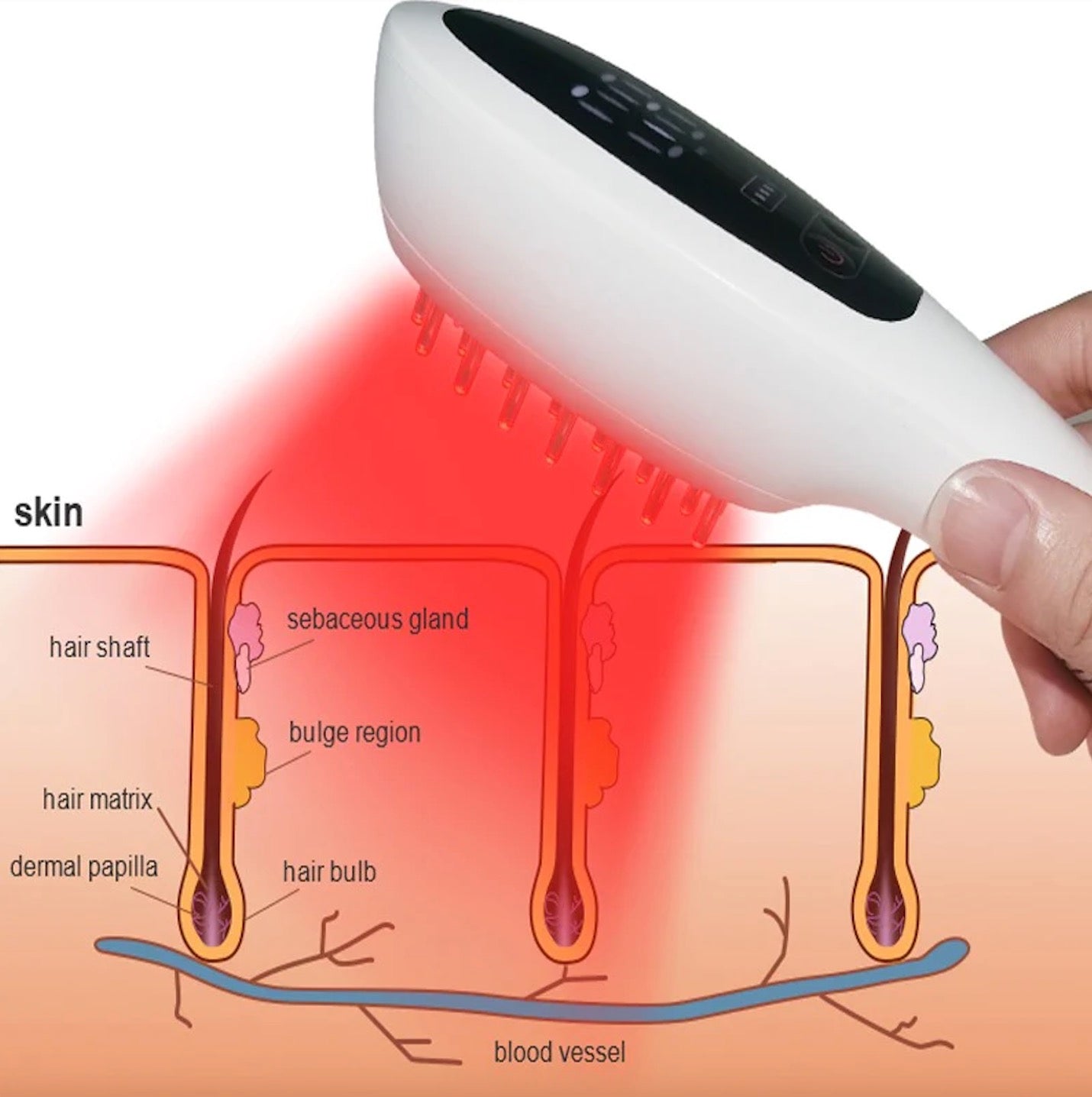Arthritis, a prevalent condition affecting millions worldwide, is notorious for causing chronic pain and disability, significantly impacting the quality of life. Characterized by joint inflammation, stiffness, and pain, it presents a daily challenge for those affected.
Amidst various treatment options, laser therapy emerges as a modern and innovative approach. This non-invasive technique has garnered attention for its potential to alleviate pain and improve joint function in arthritis patients.
In this blog, we'll delve into the intricacies of laser therapy for arthritis, exploring its mechanisms, benefits, and how it stands as a promising option in the ongoing battle against arthritis.
Understanding arthritis and its challenges
What is arthritis?
Arthritis is not a single disease; it's a term that covers over 100 conditions affecting joints and the surrounding tissues. The most common types are osteoarthritis, characterized by cartilage breakdown, and rheumatoid arthritis, an autoimmune disorder causing joint inflammation.
How does arthritis impact daily life?
Arthritis symptoms like joint pain, swelling, and stiffness significantly hamper daily activities. Simple tasks like walking, gripping objects, and climbing stairs can become challenging, leading to a reduced range of motion and chronic discomfort. These limitations often result in lifestyle changes and can impact emotional well-being.
What are traditional arthritis treatments?
Traditional treatments aim to manage symptoms and improve joint function. They include:
- Medications: Pain relievers (like acetaminophen), anti-inflammatory drugs, and in the case of rheumatoid arthritis, disease-modifying antirheumatic drugs (DMARDs).
- Physical Therapy: Exercises to strengthen muscles around joints and improve flexibility.
- Lifestyle Modifications: Weight management and joint-friendly activities.
- Surgical Options: Joint repair, replacement, or fusion, typically considered in severe cases.
Understanding these facets of arthritis sets the stage for exploring how laser therapy offers a unique approach to managing this pervasive condition.
What is laser therapy?
How is laser therapy utilized in medicine?
Laser therapy, a progressive medical treatment, utilizes focused light to achieve therapeutic effects. Unlike the high-intensity lasers used in surgery to cut or destroy tissue, therapeutic lasers exert subtler effects to promote healing and pain relief. This technology has found its niche in various medical fields, including dermatology, ophthalmology, and now prominently in treating musculoskeletal conditions like arthritis.
What types of laser therapy are used for arthritis?
In the realm of arthritis treatment, two main types of laser therapy are prevalent:
- Low-Level Laser Therapy (LLLT): Also known as cold laser therapy, LLLT uses low-intensity lasers or light-emitting diodes (LEDs). It doesn't heat body tissues, making it a gentle option.
- High-Intensity Laser Therapy (HILT): While still non-invasive, HILT uses higher intensities to penetrate deeper into tissues, providing pain relief and promoting healing in more severe cases.

How does laser therapy work in arthritis treatment?
- Pain Relief and Reduced Inflammation: Laser therapy can decrease nerve sensitivity and release endorphins, natural painkillers. It also reduces inflammation by lowering levels of prostaglandins, inflammatory markers.
- Accelerated Tissue Repair and Cell Growth: Laser light enhances cellular energy production, which speeds up healing and tissue repair.
- Improved Vascular Activity: Laser therapy promotes the formation of new capillaries in damaged tissues, improving blood flow and hastening the healing process.
- Increased Metabolic Activity: Enhanced transport of nutrients and oxygen to the affected cells stimulates healing.
- Reduced Fibrous Tissue Formation: Laser therapy reduces scar tissue formation, which is beneficial in conditions like arthritis where mobility and flexibility are crucial.
The non-invasive nature of laser therapy makes it an appealing alternative or complement to traditional arthritis treatments, offering pain relief and healing without the need for medications or surgery. By harnessing the power of light, it opens new avenues for managing chronic conditions like arthritis.
The science behind laser therapy for arthritis
Exploring the mechanism behind laser therapy
Laser therapy treats arthritis by emitting photons that penetrate the skin and are absorbed by cell mitochondria. This process, called photobiomodulation, boosts mitochondrial activity, increasing production of ATP, the cell's energy molecule. This heightened cellular energy accelerates tissue repair and regeneration, effectively addressing arthritis symptoms by enhancing the body's natural healing processes at the cellular level.
Research evidence supporting laser therapy
Numerous clinical studies and trials have played a key role in validating the effectiveness of laser therapy in treating arthritis. These research findings indicate that laser therapy significantly enhances pain relief and joint mobility. For instance, a study featured in the 'Lasers in Medical Science' journal revealed that individuals with knee osteoarthritis who received low-level laser therapy experienced less pain and better physical function. Likewise, a different study in the 'Journal of Rheumatology' demonstrated that patients with rheumatoid arthritis undergoing laser therapy exhibited significant improvements in the flexibility and strength of their hands.

The observed benefits of laser therapy in arthritis
Patients undergoing laser therapy for arthritis have reported various benefits, including:
- Pain Reduction: Laser therapy can alleviate pain by reducing inflammation and stimulating the release of endorphins, the body’s natural painkillers.
- Improved Joint Function: By reducing joint stiffness and increasing flexibility, laser therapy enhances mobility and quality of life.
- Reduced Inflammation: The anti-inflammatory effects of laser therapy are crucial in managing arthritis, a condition marked by chronic joint inflammation.
- Enhanced Tissue Repair: Accelerated healing of the surrounding tissues can lead to a more sustainable and long-term improvement in joint health.
In summary, laser therapy offers a scientifically backed, non-invasive treatment option for arthritis, with promising results in pain management and improved joint functionality.
Comparing laser therapy with traditional arthritis treatments
Evaluating treatment options for arthritis
When it comes to managing arthritis, patients often face a choice between newer methods like laser therapy and traditional treatments. Understanding the benefits and limitations of each approach is crucial for informed decision-making.
Laser therapy vs. medications
- Laser Therapy: It offers a non-pharmacological approach, avoiding potential side effects associated with long-term medication use. However, accessibility and cost can be limiting factors, and its efficacy varies among individuals.
- Medications: Traditional medications, including pain relievers and anti-inflammatory drugs, are widely accessible and can provide quick symptom relief. However, their long-term use can lead to side effects such as gastrointestinal issues or liver damage.
Expert Opinion on Medication vs. Laser Therapy
Dr. Jane Smith, a rheumatologist, notes, "While medications are a mainstay in arthritis treatment, laser therapy presents a promising alternative, especially for patients concerned about medication side effects."

Laser therapy vs. physical therapy
Laser Therapy: It can provide faster pain relief and requires less active participation from the patient compared to physical therapy. However, its effects might be more short-term without the sustained benefits of physical conditioning.
Physical Therapy: This approach not only helps in pain management but also improves joint mobility and strength over time. The downside is the need for ongoing commitment and potential discomfort during exercises.
Laser therapy vs. surgery
Laser Therapy: Being non-invasive, it poses minimal risks compared to surgery and requires no recovery time. However, it might not be sufficient for advanced cases of arthritis.
Surgery: Surgical interventions like joint replacement offer long-term solutions for severe arthritis but come with risks of complications, a lengthy recovery period, and significant costs.
Surgeon's Perspective
Orthopedic surgeon Dr. Michael Lee says, "Surgery should be a last resort for arthritis. Non-invasive treatments like laser therapy can be effective for many, delaying or even eliminating the need for surgery."
By comparing these treatment options, it's evident that each has its place in arthritis management, with laser therapy emerging as a valuable tool in the arsenal against this debilitating condition.
Safety, side effects, and considerations
Assessing the safety of laser therapy
Laser therapy, particularly low-level laser therapy for arthritis, is generally recognized as safe when performed by qualified professionals. The non-invasive nature of this treatment minimizes many risks associated with more invasive procedures. However, like any medical intervention, it's essential to consider its safety profile and potential side effects.

Potential side effects and contraindications
While laser therapy is largely free from the side effects typical of surgery or long-term medication use, there are still some considerations:
- Mild Skin Irritation: Some patients may experience temporary redness or irritation at the treatment site.
- Eye Safety: Direct laser exposure can be harmful to the eyes, necessitating the use of protective eyewear during treatment.
- Contraindications: Laser therapy is generally not recommended for certain conditions, such as over cancerous areas, directly over the thyroid, or in pregnant women.
Expert Advice on Laser Therapy Safety
Dr. Emily Roberts, a pain management specialist, advises, "Laser therapy is a safe treatment modality for arthritis, but it's crucial that patients disclose their full medical history to avoid any contraindicated conditions."
Considerations before choosing laser therapy
Patients contemplating laser therapy for arthritis should consider the following:
- Consult a Specialist: It's important to discuss with a healthcare provider to determine if laser therapy is appropriate for your specific type of arthritis and overall health condition.
- Understand the Treatment Plan: Knowing the number of sessions, duration, and expected outcomes helps set realistic expectations.
- Insurance and Cost: Verify if the therapy is covered by insurance or prepare for potential out-of-pocket expenses.
- Explore Combination Treatments: Consider if laser therapy can be part of a broader treatment plan, including physical therapy or medications.
In summary, while laser therapy presents a safe option for many arthritis patients, it's essential to approach this treatment method with a thorough understanding of its safety profile and to consider personal health circumstances. As with any medical treatment, an informed decision is key to achieving the best outcomes.
If you want to learn more about Domer laser, please feel free to contact us.
Summing up
To sum up, laser therapy for arthritis presents an encouraging and non-invasive approach, providing benefits such as alleviating pain, enhancing joint mobility, and having few side effects. Nonetheless, consulting healthcare experts is crucial to determine if it's the right choice for your particular case and to develop a treatment strategy that fits your overall health objectives and requirements.




